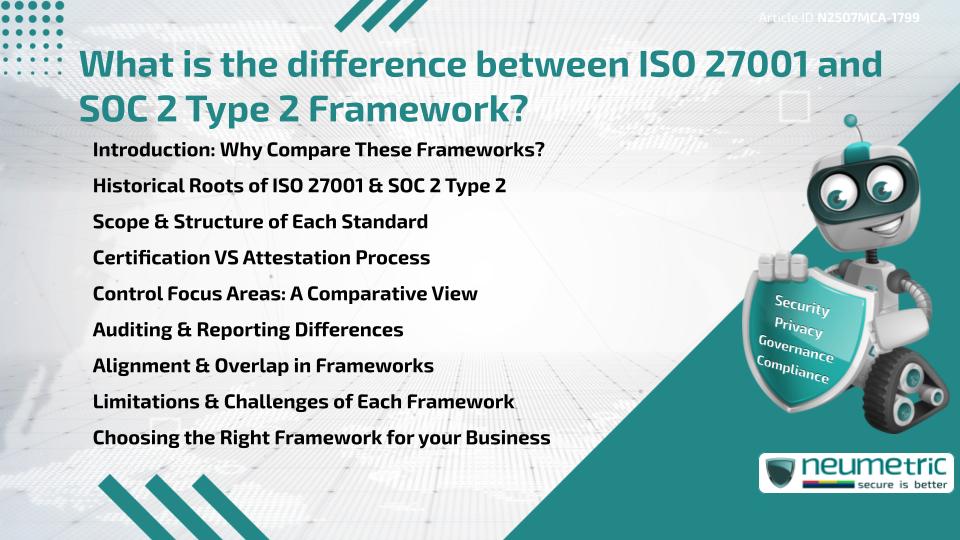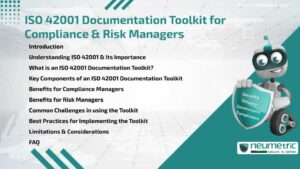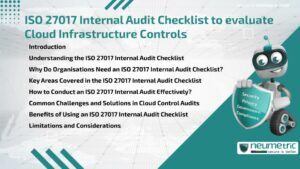Table of Contents
ToggleIntroduction: Why Compare These Frameworks?
ISO 27001 and SOC 2 Type 2 are both widely used to demonstrate strong Information Security Practices. Understanding the difference between ISO 27001 and SOC 2 Type 2 is Key for Organisations choosing a Framework that fits Compliance & Customer needs.
Historical Roots of ISO 27001 & SOC 2 Type 2
ISO 27001 evolved from older Management Standards to become the leading global Security Benchmark. It formalises requirements through an Information Security Management System [ISMS]. SOC 2 Type 2 comes from American Auditing Standards focused on Service providers & is regulated by AICPA. It offers In-depth reporting on Controls over time rather than design alone.
Scope & Structure of Each Standard
ISO 27001 includes formal Clauses & a Set of Annex A Controls covering Risk Management, Access Control, Cryptography & More. Organisations must implement all relevant Controls tied to Risk. SOC 2 Type 2 focuses on Trust Services Criteria like Security, Availability & Confidentiality. Providers often select Criteria aligned with their Services.
Certification VS Attestation Process
An External body Certifies ISO 27001 Compliance, while SOC 2 Type 2 results in an Attestation Report issued by a licensed CPA. The difference between ISO 27001 and SOC 2 Type 2 shows most clearly here: Certification validates Management Systems, while Attestation validates Operation of Controls during a review period.
Control Focus Areas: A Comparative View
ISO 27001 emphasises a Risk-based approach across all Organisational Levels. SOC 2 Type 2 emphasises Service Delivery Controls, Logging, Incident Handling & Change Management. While there is overlap, SOC 2 Type 2 may require deeper evidence for Operations that matter to Customers while ISO 27001 offers broader Governance coverage.
Auditing & Reporting Differences
ISO 27001 Audits look at Management Systems, Documentation & Effectiveness. SOC 2 Type 2 Audits require Evidence—in Logs, Reports or System Configurations—over a defined Timeframe, usually six (6) to twelve (12) months. The difference between ISO 27001 & SOC 2 Type 2 in Audit Scope & Frequency can influence Decision-making between Governance & Operational focus.
Alignment & Overlap in Frameworks
Many Controls align between the two (2) Frameworks. Organisations often implement ISO 27001 Controls & then map those to SOC 2 Type 2 criteria. This helps reduce duplicate efforts. The Key is noting that while ISO 27001 aims for Certification, SOC 2 Type 2 results in a periodic attestation of Control performance.
Limitations & Challenges of Each Framework
ISO 27001 may lack evidence depth & depend on Internal Auditors recognising performance Gaps. SOC 2 Type 2 Attestation may demand high Operational detail, which can be Time-consuming for Systems with complex logging. Knowing the difference between ISO 27001 & SOC 2 Type 2 helps Organisations choose based on priority, Risk Maturity or Customer Trust.
Choosing the Right Framework for your Business
If Global Compliance, formal Governance & Ongoing Certification matter, ISO 27001 is ideal. If Operations, evidence of Controls & Ongoing Client reassurance are Key, SOC 2 Type 2 fits well. Many mature Organisations opt for both, starting with ISO 27001 & layering SOC 2 Type 2 Attestation onto Operational Controls.
Conclusion
The difference between ISO 27001 & SOC 2 Type 2 lies in Scope, Audit Focus & Certification versus Attestation. Each Standard has its place & often both serve together to strengthen Security Posture & Build Stakeholder Trust.
Takeaways
- ISO 27001 is a Governance Standard Certified by Third Party bodies
- SOC 2 Type 2 focuses on Operational Control Performance over time
- Audit Methods differ, System Readiness versus Control Execution
- Both Frameworks often overlap in Technical Controls
- Choose based on Organisational maturity Compliance Goals or Client demand
FAQ
What is the main difference between ISO 27001 & SOC 2 Type 2?
ISO 27001 provides Management System Certification; SOC 2 Type 2 offers Operational Attestation over a review period.
Can Organisations adopt both Frameworks?
Yes. Many start with ISO 27001 & map its Controls to meet SOC 2 Type 2 Criteria, reducing duplicate efforts.
How long does a SOC 2 Type 2 Audit take?
Typically six (6) to twelve (12) months of monitored Control Performance is required before Attestation.
Is ISO 27001 recognized Globally?
Yes. It is an Internationally accepted Standard published by ISO for Information Security Management.
Do both Frameworks require External Audits?
Yes. ISO 27001 needs Certification by Accredited bodies; SOC 2 Type 2 requires CPA Attestation.
References
- ISO 27001 Overview
- AICPA SOC 2 Reports Guide
- Trust Services Criteria
- ISO 27001 Annex A Controls
- NIST Risk Management Framework
Need help?
Neumetric provides organisations the necessary help to achieve their CyberSecurity, Compliance, Governance, Privacy, Certifications & Pentesting goals.
Organisations & Businesses, specifically those which provide SaaS & AI Solutions, usually need a CyberSecurity Partner for meeting & maintaining the ongoing Security & Privacy needs & requirements of their Clients & Customers.
SOC 2, ISO 27001, ISO 42001, NIST, HIPAA, HECVAT, EU GDPR are some of the Frameworks that are served by Fusion – a centralised, automated, AI-enabled SaaS Solution created & managed by Neumetric.
Reach out to us!





